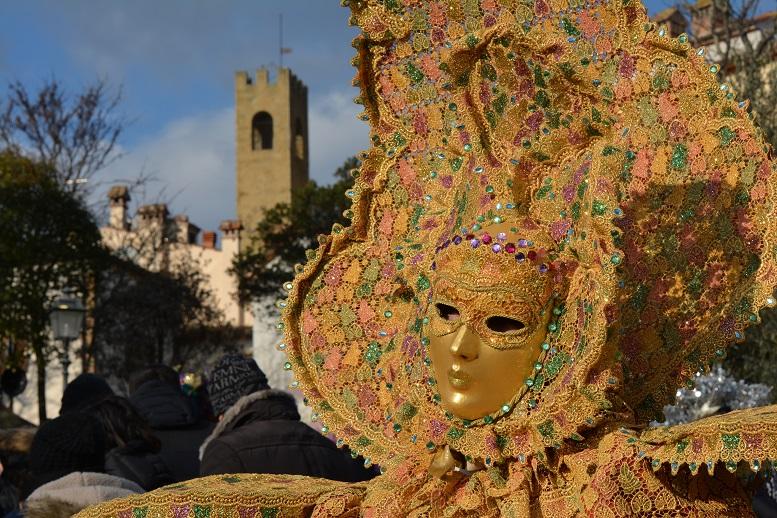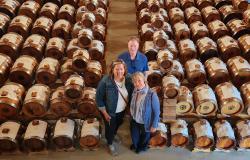[Photo: Carnival at Castiglion Fibocchi in Tuscany. Photo credit: http://www.fotoamatoriciuffenna.it.]
It’s that time of the year again, Carnevale, the ultimate irreverent celebration! Descending from the Dionysian cults of ancient Greece and the Saturnalia of the Roman world, Carnival is no longer a reversal of hierarchies and roles, as it was in the past; but the sense of fun, sneer and transgression remains.
We’ve already told you about the most famous Carnival celebrations in Italy. Now’s the time to head to lesser-known, but no less charming, Carnevali, held all across Italy.
Piedmont – Borgosesia (Vercelli)
Held in the main center of the Val Sesia, the Carnival of Borgosesia features processions and tastings, and a parade of five allegorical floats, one for each rione (neighborhood) of the town. Make sure you try the traditional busecca, a local dish similar to tripe (well, if that is your thing), and stay for the grand finale, the Mercu scurot, a fireworks show held exceptionally on the Wednesday after Fat Tuesday (this year Feb. 14).
When: from Jan. 21 to Feb. 14. https://www.carnevaleborgosesia.it/index.php/mercu-scurot
Lombardy – Bagolino (Brescia)
This little-known Carnival event is held on Fat Monday and Tuesday and features dancers and music players (balarì) dressed in traditional costumes, wearing red hats sewed with colorful ribbons, brooches, rings, necklaces, moving around the streets of the borgo; while the maschèr, disguised as old men, make jokes trying not to get recognized.
When: Monday Feb. 12 and Tuesday Feb. 13. www.bagolinoinfo.it.
Friuli Venezia Giulia - Sauris (Udine)
This tiny center in the Carnia area of the region hosts one of Italy’s most unique carnival celebrations. Taking place on just one day, this year Saturday 10 February, it features the Rölar, a diabolical figure constantly shaking the bells he carries around the waist, and the Kheirar, the king of masks, who summons all couples, strictly masked and unrecognizable, from their homes to accompany him in a dancing procession. The ancient masks they wear are made of wood. The event culminates with the ‘night of the lanterns,’ a walk in the woods leading to the great, closing bonfire.
When: Saturday Feb. 10. http://www.sauris.org/en/.
Tuscany - Castiglion Fibocchi (Arezzo)
Even if held in Tuscany, the Carnival of the ‘Figli di Bocco’ resembles the Venice carnival and its elegant baroque masks. The 12th century village takes its name from the figure of Ottaviano Pazzi, of the family that took over the fiefdom of the Guidi family; he was nicknamed ‘Bocco’ for a deformation of his face. For the past 20 years, the "sons of Bocco" have kept alive ancient local traditions, among them the fancy costumed and masked parties, so for Carnival as many as 200 costumed people with faces covered by classic Venetian masks swarm over the village.
When: Sunday, Jan. 28 and Sunday, Feb. 4. www.carnevaledeifiglidibocco.it.
Molise - Rocchetta al Volturno (Isernia)
In Molise, as in many regions of south-central Italy, the connection with the cycles of nature is strong. In the tiny Castelnuovo di Rocchetta al Volturno, the last Carnival Sunday is the day of the Uomo Cervo, Man Deer, a monstrous, half-man, half-animal figure, who emerges from the woods, scaring villagers. It is a symbol of cold, winter harsh, hunger. A certain Martino tries to tame him to no avail, until a hunter kills him. Martino manages, miraculously, to revive him: the deer, now domesticated, returns to the woods; and a large bonfire of purification is lit.
When: Sunday, Feb. 11.http://www.uomocervo.org/cervo.php.
Love Carnival and Italian food? Here's our Foodie Guide to the Carnival season.





